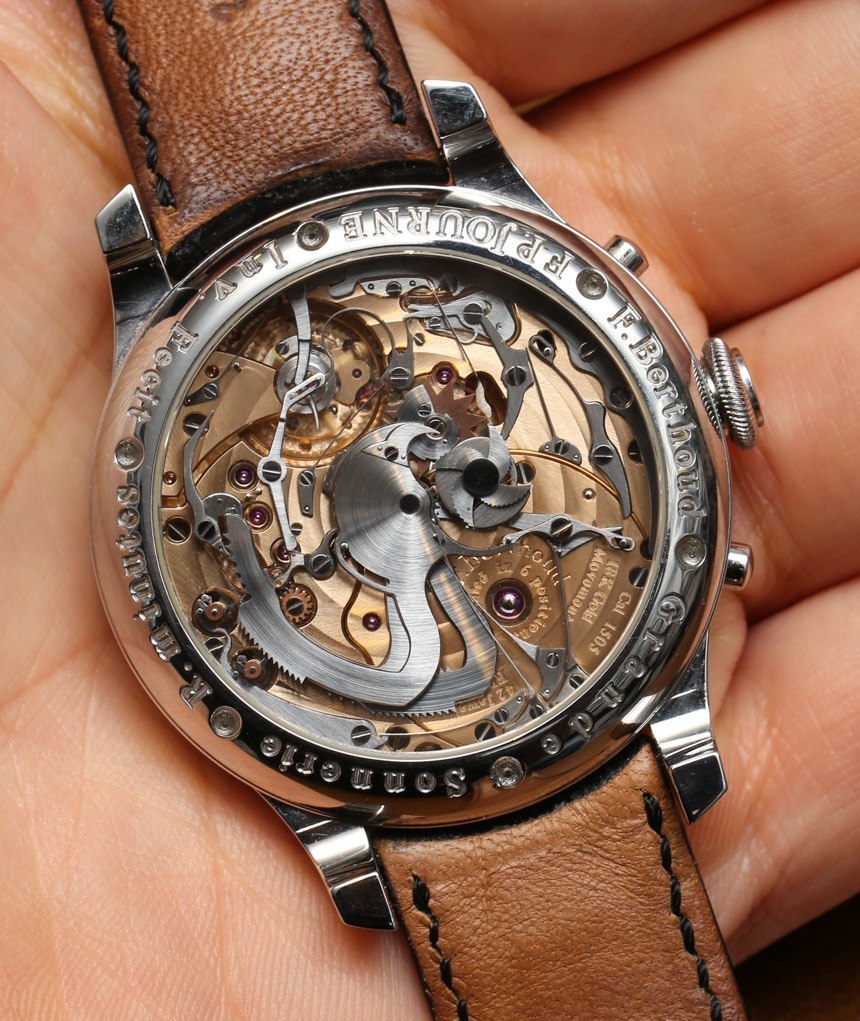Fikk en hyggelig mail fra watchtime i dag som jeg følerer jeg må dele med dere.
Power or Precision?
An insider's look at FP Journe - Part 1
Ten years ago, when F.P. Journe introduced his Chronomètre Souverain, his goal was to achieve a true Chronometer status. Precision has always been the essence of Mr. Journe's quest. His two first attempts were the Remontoir d'Egalité that regulates the flow of energy in his Tourbillon, and the Resonance movement that compensates for the movement of one's wrist (making it -de facto- the only true
wrist watch in the world). For a "seemingly" simple timepiece, Mr. Journe elected to fit his Chronomètre Souverain with a double barrel. But unlike his peers, the goal was not to achieve a longer power reserve. By fitting each barrel with a very long (1 meter long) but
loose spring, Mr. Journe flattened the power curve. To easily understand imagine a spring when it is fully loaded. It has a "speeding" effect on the movement and as it dies, power gets weaker and therefore the timepiece has a tendency to go slower.
Now, any watchmaker can make a chronometer where the average over the power reserve is close to 0. But who is looking for average when telling time? When one looks at his timepiece, one should be able to tell the exact time (and not the average over a certain period of time).
To illustrate this system, Mr. Journe decided to emphasize each of the main components by seemingly disconnecting them.
One other specification that Mr. Journe set was that the thickness of the movement was not to exceed 4 mm. In order to achieve this, there was one major problem. The power reserve indicator system that he was using at the time was 1.57 mm thick and therefore not adequate. He had to create (and then patent) an ultra slim power reserve indicator using ceramic ball bearings. It shrunk to 0.5 mm and became the system used in all FP Journe timepieces thereafter.
To mark the Chronomètre Souverain's 10th anniversary, FP Journe launched a new series of dials. Here again, apparent simplicity was not easy to achieve. Working closely with his own dial making atelier, Mr. Journe and his technicians were able to make the new dials from a solid gold coin. The dial gets stamped on all sides and surfaces, except for the numbers that are thus raised. The normal technique would have been to apply those numbers, but numbers like the 7 are too small to use that technique. After many different trials and much time, the new Chronomètre Souverain was born.
Distance adjustment
This dial execution (available also with red gold numerals on the red gold Chronomètre Souverain) was almost as difficult to achieve as the dial of the famous Chronomètre Bleu. The issue with "simple" dials is that the minutest blemish is magnified. To this day, the Chronomètre Bleu dial has close to a 65% rejection rate by Mr. Journe's quality control team. Interesting and so like Journe to make his least expensive timepiece have the most difficult dial. But Mr. Journe's goal is not to achieve quantity (they still produce between 800 to 900 timepieces a year). His goal is to express his artistic and watchmaking wizardry through his timepieces. This is also the reason why all of F.P. Journe timepieces come with 18k solid gold movement (except the Sport collection with never seen before aluminum movements).
But as Thomas Edison first said: "Genius is one per cent inspiration, ninety-nine per cent perspiration". FP Journe is the only company in Switzerland where the founder is also the president AND the watchmaker. And where may you find Mr. Journe in is manufacture? At his bench, day in and day out.
To view the movement: http://www.fpjourne.com/eu/collections-en-sv-csouv-1.html?v=modele
For more information,
www.fpjourne.com























